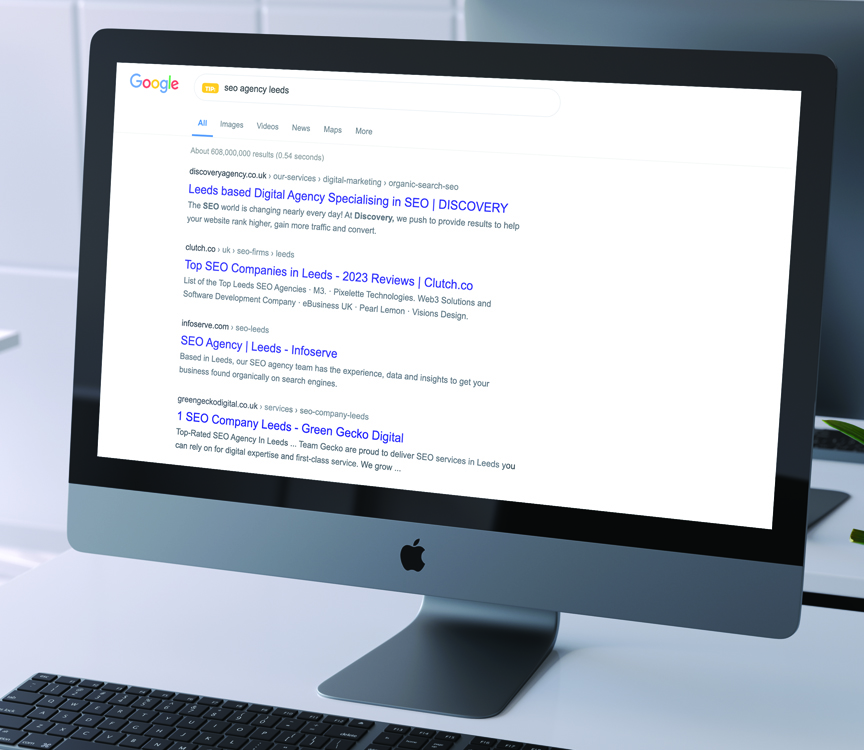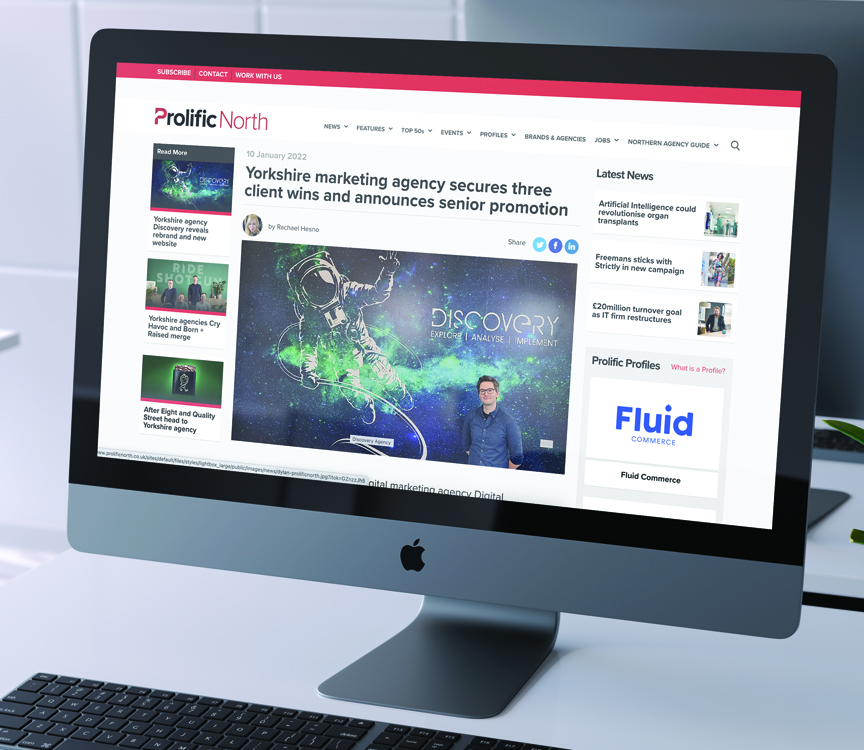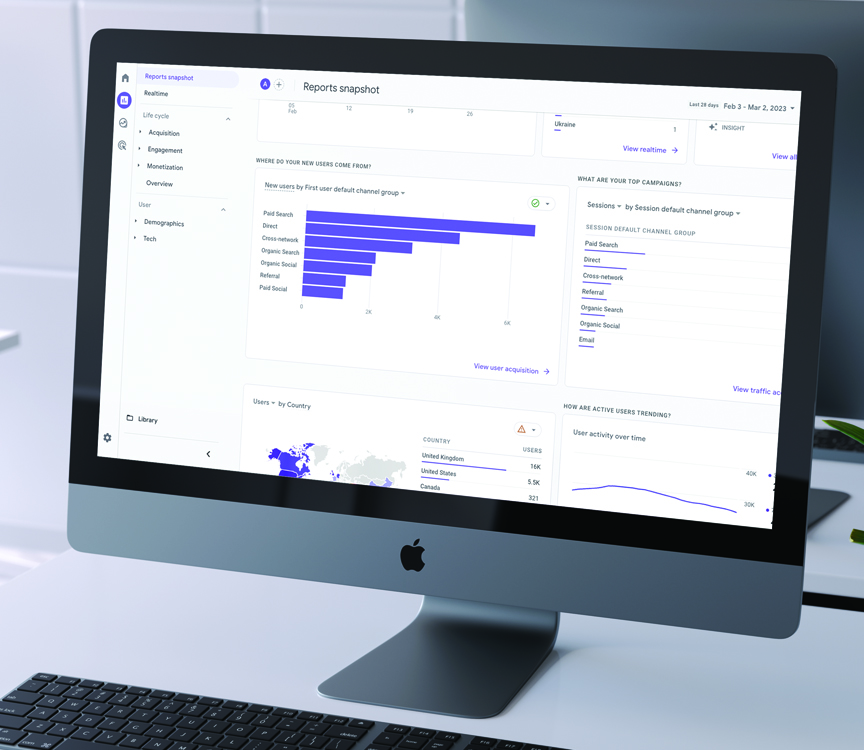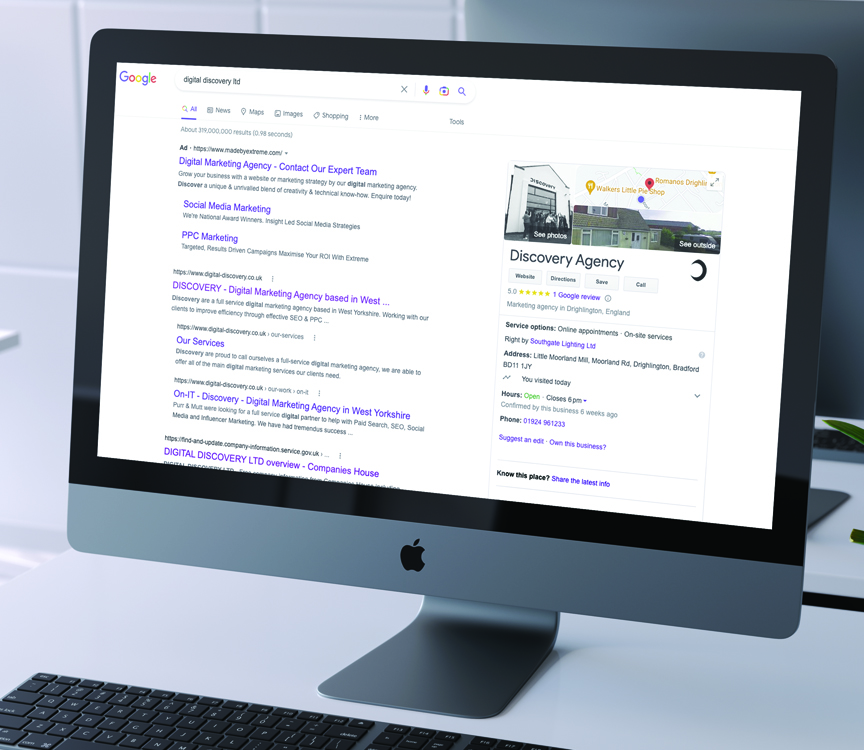ORGANIC SEARCH (SEO)
SEO, or Search Engine Optimisation, is the practice of optimising a website to enhance its position in search engine results pages (SERPs). By making modifications to a website's content and structure, businesses and marketers can boost the visibility of their site in search results, leading to increased traffic and potentially more conversions and sales.
There are many different facets of SEO, including keyword research, on-page optimisation, and link building. Keyword research entails identifying the words and phrases that individuals are searching for regarding a specific product or service. On-page optimisation requires making changes to the content and structure of a website in order to make it more search engine friendly. Link building involves obtaining links from other websites to your own to improve your website's visibility.
Digital marketing plans frequently incorporate SEO as a central element, as it can be a highly effective method of driving traffic to a website. By creating high-quality content and optimising it for search engines, businesses can enhance their visibility in search results and attract more prospective customers to their website. Additionally, SEO can aid businesses in establishing a robust online presence, which is crucial for building trust and credibility with customers.
TECHNICAL SEO
Technical SEO refers to the optimisation of a website's technical aspects to enhance its visibility in search engine results pages (SERPs). This may include enhancing website speed and performance, ensuring the website is mobile-friendly, and making certain the website is accessible to search engine crawlers.
One of the crucial elements of technical SEO is website architecture, which encompasses aspects such as the organisation of content, the use of header tags, and the implementation of internal linking. A well-structured website is simpler for search engine crawlers to navigate, which can improve its visibility in search results. Furthermore, a well-structured website can enhance user experience, resulting in higher engagement and conversion rates.
Another significant aspect of technical SEO is website speed and performance. A slow-loading website can impact user experience negatively and also affect search engine rankings. By optimising images, minimising code, and utilising a Content Delivery Network (CDN), website speed and performance can be improved.
Technical SEO can be intricate, and it's vital to stay up-to-date with the latest best practices and guidelines from search engines. Nonetheless, by focusing on these crucial areas, businesses can enhance their website's visibility in search results and drive more traffic to their website.
ON-PAGE SEO
On-page SEO refers to the practice of optimising individual web pages to rank higher and attract more relevant traffic from search engines. This involves making changes to a webpage's content, structure, and design to make it more search-engine-friendly.
One of the critical aspects of on-page SEO is keyword research, which entails identifying the terms and phrases that people search for in relation to a specific product or service. Once these keywords have been identified, they can be included in the content, meta tags, and URL of the webpage to enhance its relevance to search engines.
Another crucial aspect of on-page SEO is the use of header tags, such as H1, H2, and H3 tags. These tags help to organise the content on a webpage and make it easier for search engines to understand the structure of the content.
On-page SEO also involves making the website mobile-friendly and responsive, ensuring it can be easily viewed on a range of devices, including smartphones and tablets.
Additionally, on-page SEO encompasses meta-tag optimisation, the use of structured data and internal linking to optimise the website, and the creation of high-quality, unique, informative, and engaging content. On-page SEO can be a time-consuming process, but it is a crucial component of search engine optimisation. By focusing on these key areas, businesses can enhance the visibility of their website in search engine results and drive more relevant traffic to their site.
BACKLINKS & DIGITAL PR
Backlinks, also referred to as inbound links or incoming links, are hyperlinks from other websites that lead to your website. They hold significance in determining the popularity and authority of a website and are commonly used by search engines to assess the quality and relevance of a website. Backlinks from high-quality, trustworthy websites can enhance a website's visibility on search engine results pages (SERPs).
Digital PR, also referred to as online public relations, encompasses promoting a brand, product or service through online mediums. This could include press releases, social media campaigns, and influencer marketing. A vital aspect of digital PR is link building, which involves acquiring backlinks from other websites to improve a website's visibility on SERPs.
Backlinks and digital PR are both important factors in Search Engine Optimisation (SEO) as they can boost a website's visibility on SERPs, increase website traffic and eventually drive more sales. By creating backlinks from reputable websites, businesses can improve their website's reputation and credibility in the eyes of search engines. Furthermore, digital PR can enhance brand recognition and establish a robust online presence, which is crucial in building trust and credibility with customers.
PAGE SPEED
Page speed refers to how quickly a webpage loads and is a key component of technical SEO. Search engines such as Google take page speed into consideration when ranking websites, as slow-loading pages can reduce user experience and increase bounce rates. This can also impede the crawling and indexing of a page by search engines, which can impact its visibility in search results.
To enhance page speed, you can optimise images, minimize code, and utilize a Content Delivery Network (CDN). Optimising images involves compressing them to decrease their file size without sacrificing quality. Minifying code involves removing unnecessary characters and spaces to reduce file size and enhance loading times. A CDN, which is a network of servers distributed globally, can enhance page speed by caching and delivering content from the server closest to the user.
It's important to keep in mind that several factors such as the user's internet connection, browser, and the device can affect page speed. You can test your webpage speed using Google PageSpeed Insights, which provides a score and recommendations for improving loading time. By focusing on improving page speed, businesses can improve their website's visibility in search engine results and offer a better user experience for visitors.
SEO vs PPC
SEO (Search Engine Optimisation) and PPC (Pay-Per-Click) are both digital marketing strategies that are used to drive traffic to a website. However, they are distinct in their approach, cost and effectiveness.
SEO is the process of optimising a website in order to improve its ranking in search engine results pages (SERPs) through technical optimisation and content optimisation. It's a long-term strategy that can take time to see results, but once the website is optimised, it can continue to drive relevant traffic to the website without additional cost.
PPC, on the other hand, is a method of buying visits to your website, by placing ads on search engines, social media platforms or other websites. The ads are usually in the form of sponsored links, and advertisers pay each time the ad is clicked. It is a quicker way to drive traffic to the website, since the ads can be up and running within a short time. However, it requires a budget to be allocated and ongoing costs to keep the ads running.
Both SEO and PPC can be effective in driving traffic to a website, but they are most effective when used together. SEO can help to improve the visibility of a website in organic search results, while PPC can be used to supplement that visibility and drive additional traffic to the website. By using both strategies together, businesses can reach more potential customers and ultimately drive more conversions and sales.
LOCAL SEO
Local SEO is the process of optimising a website in order to improve its visibility in search engine results for a specific location. This is often used by businesses with a physical location or that serve a specific geographical area. Local SEO can help to drive more relevant traffic to the website and ultimately lead to more conversions and sales.
There are several key elements to local SEO, including:
Creating local listings and citations: This includes listing your business on directories such as Google My Business, Bing Places, and Yelp. It's important to ensure that your listings are accurate and consistent across all platforms.
Building backlinks from local websites: Backlinks from local websites can help to improve your website's visibility in search engine results for a specific location.
Optimising your website for location-specific keywords: This includes incorporating location-specific keywords into your website's content, meta tags, and URLs.
Optimising your website for mobile devices: Since most of the local search is done on mobile devices, having a mobile-friendly website will improve your chances of ranking higher in local search results.
Encourage your customers to leave reviews: Positive reviews can help to improve your visibility in search engine results and build trust with potential customers.
Overall, local SEO is a vital part of a business's digital marketing strategy, as it can help to improve the visibility of a website in search engine results for a specific location and drive more relevant traffic to the website.






